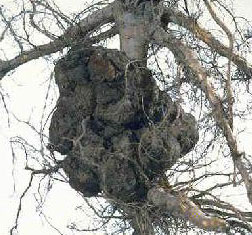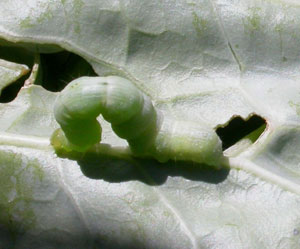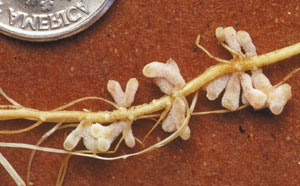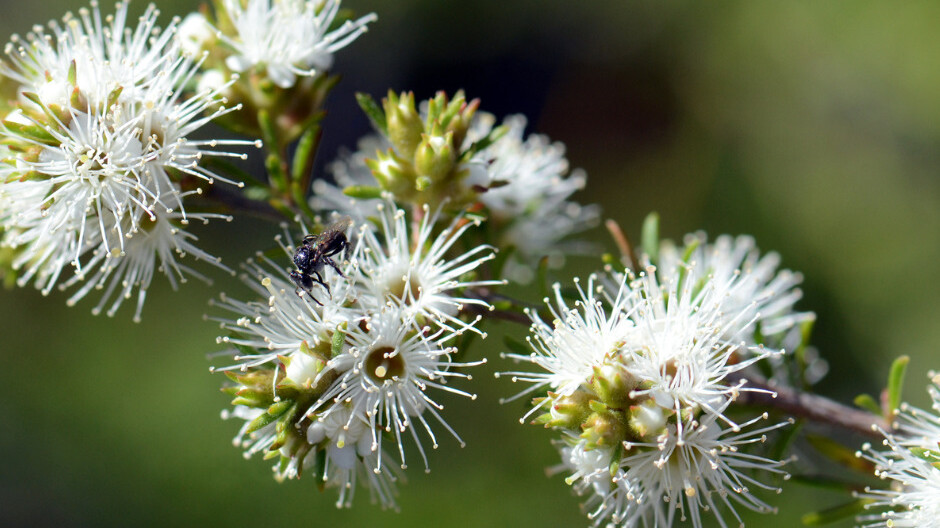
More than 200 different plant bacteria cause plant disease in Australia. However, there’s also a host of bacteria that are beneficial to the plants we grow. Some bacteria have been harnessed for commercial products, to control plant pests and diseases, and some live in mutually beneficial, symbiotic relationship with plants.
Beneficial Bacteria
There is a long list of bacteria that help our gardens stay fertile and help break down and recycle nutrients. Here are just a few.
Agrobacterium sp
Scientists had been battling the ‘Baddie’ Agrobacterium that causes Crown Gall Disease for decades. It causes cancer-like growths on lower stems and roots. It was a particularly devastating disease of the fruit industry worldwide.
In 1969, a student at the Waite Agricultural Research Institute in Adelaide isolated a strain of the Agrobacterium that infected plants but didn’t cause the cancer-like growth. In fact, this benign strain somehow protected young fruit trees against the virulent form of the same bacterium.
Professor Allen Kerr and his team dubbed the strain K84 and later discovered why it worked. K84 produces an antibiotic that is deadly to the pathogenic strain but it is unaffected itself because it possesses a resistance gene that makes it immune to its own antibiotic (and this antibiotic was also found to be harmless to most other bacteria).
Unfortunately, the close relationship also meant that eventually there was gene swapping and the pathogenic strain also developed resistance. Undeterred, the team then worked with overseas scientists, and identified the region of DNA that allowed the transfer to other bacteria. They deleted this region. The bacterium retained its ability to synthesise the antibiotic, but could not pass the resistance gene to other bacteria.
This genetically modified bacterium was then called K1026. In 1988, the NSW Department of Agriculture approved K1026 for commercial use as a pesticide. It was subsequently given the name No Gall and this product is now used all over Australia. It’s not been approved for release overseas, as K84 is still an effective control.
In 1990 Professor Allen Kerr, Professor Eugene Nestor (USA), and Professor Jeff Schell (Germany) were awarded the Prime Minister’s Australia Prize for Science for this work.

Bacillus thuringiensis (Bt)
Various forms of this bacterium have been harnessed to control some species of leaf-eating caterpillars (like the Cabbage White caterpillar pictured right), mosquitoes and varieties of beetles. It can be found in products called Dipel, Xen Tari, Cybate, Vectobac, and Novodor.
Bt is a naturally occurring soil bacterium and several strains are known to kill insects. Bt‘s ability was discovered in 1911, but it wasn’t commercially available until the 1950s.
Unlike typical nerve-poison insecticides, Bt acts by producing proteins that react with the gut lining. The proteins paralyse the digestive system and the insect stops feeding. The Bt-affected insects die from starvation, which can take several days.

Rhizobia
Nitrogen-fixing bacteria. Legumes (members of the Fabaceae family, which include peas and beans) have a symbiotic relationship with this bacterium. The bacteria are seen as nodules on the roots of legume plants, as can be seen above, and should not be confused with nematode damage (see our information sheet on Nematodes).
Rhizobia provide the plant with additional nitrogen that would otherwise be unavailable to it by converting nitrogen from the atmosphere into ammonia that plants can use.
Legume crops therefore require less nitrogen than other crops because of this relationship.
Acacias have the same relationship with bacteria, and because they are one of the first plants to germinate and grow after fire, they help the plants that follow. Acacias provide nearby plants with nitrogen all year round.
When using pea straw as mulch, often pea plants will germinate. This is to be encouraged. Chop the plants down before they flower, and you also have additional nutritious mulch. Win, win!
Composting Bacteria
Very important for recycling nutrients are the bacteria which are active in both soil and compost heaps. Most of the composting work is done by bacteria, but fungi and yeasts, as well as certain bugs assist. And, of course, worms very valuable too.
There are a large number of different bacterial species but they can be broadly divided into aerobic (requiring oxygen) and anaerobic (do not require oxygen). Aerobes are most efficient at breaking down organic material and do most of the work to release the nutrients (carbon, nitrogen, phosphorus and minerals) that provide the growth-promoting qualities of compost. To keep them happy we need to turn compost heaps regularly, avoid them getting “gluggy” or put in tubes with holes punched in them to keep an air supply going.
The anaerobes can also break down organic material, but rather slowly and, if there are too many of them, compost piles will start to smell ugly because they release hydrogen sulphide which smells like rotten eggs.
Biodegradation – various species
Various bacteria species have been found to break down pesticides, pollutants (such as hydrocarbons in oil spills, as seen above), sulphur and nutrient residues into non-toxic compounds.
They are being used in bioremediation and as natural biodegradation agents.
Other
Plant growth promoting bacteria (PGPR) are various species of bacteria that exist in the root zones and enhance plant growth.
Ice nucleation active (INA) bacteria, such as Erwinia herbicola, are epiphytes, that is, they are grown upon or attached to plants. These bacteria actually promote frost damage to sensitive plants by initiating the formation of ice crystals.
So foster growth of beneficial bacteria in your garden.
Related Articles:
Wildflower gardens – What’s the buzz about?
In the quest for sustainable and environmentally conscious practices, gardening enthusiasts and nature lovers alike are turning to a time-tested…
The Importance of building soil health for a biodeverse, productive garden
Creating a thriving garden that not only sustains itself but also contributes to the broader ecosystem requires more than just sunlight and water.…




